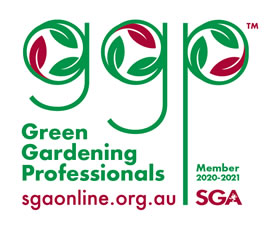| item(s), Total: $0.00 View Cart |
| Shopping cart is empty. |
Howdy, Green Lifers!
Welcome to August. In the Nyoongar calendar, we're heading into Djilba - which is when the seasons begin to change (towards what we'd call 'Spring'). It is the time of conception; many native animals are breeding now so their young are born into a season of plentiful food. I've noticed some wildflowers like Hovea making an appearance; but others seem a little slower; no doubt the cold & wet we've experienced is a sign somethings are a little later this year. That said, some of the fruit trees are in blossom, and the daffodils are out - so Spring can't be far away!It's a fabulous time to get busy in the garden right NOW to get ready for an abundant harvest in the Summer months. Work you do now to prepare your soil will make all the difference once the hot weather kicks in.We've had a few setbacks @ GLSC over the past month - a REALLY wet July (which for some reason - scared the customers away?) and then we lost our phones for a week! It's been very frustrating - what small business doesn't rely on their phones? Our new/improved website is getting closer & closer to launch - so we're looking forward to your feedback (Let us know if you find anything that seems odd!)Last Friday & Saturday Jacob represented GLSC at the Perth Indoor Jungle Festival held at Perth City Farm in East Perth. The trend in indoor plants is still growing with enthusiasts looking for specialty soils with quality soil ingredients to nuture their "plant babies" - so we're perfectly placed to support that need. We already supply our indoor potting mix to several of Perth's popular boutique indoor plant stores; and have just brought in (at their request) smaller pouches of product which hopefully you'll start seeing on shelves very soon! Tubs are still available; so for those who want to use the return & refill service; you can save on packaging. The foil pouches can be recycled (clean) via the REDcycle program at your local Coles or Woolies store.THANK YOU to all of you who completed our survey last month (it has now closed). The insights you gave about our business are being carefully looked at to see what we can do to serve you better. I'll be drawing the winners of the $25 vouchers later this month, so if you entered - keep an eye on your inboxes.We look forward to seeing you @ Green Life soon.Linda (& the Team @ The Green Life Soil Co)In this newsletter:Jobs to do in the August gardenWhat to Plant NOW Biochar - the benefits Jobs to do in the August garden
What to Plant NOW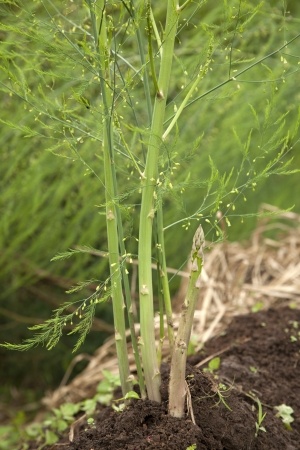 There's still time to get some crops in the ground of potatoes, onions, peas, broad beans. And there's Asparagus AND Rhubarb in store @ GLSC. Jerusalem Artichokes are on their way & will be in store within days. There's still time to get some crops in the ground of potatoes, onions, peas, broad beans. And there's Asparagus AND Rhubarb in store @ GLSC. Jerusalem Artichokes are on their way & will be in store within days.(Click onto the highlighted text above to go to the fact sheets for these plants for the detailed growing information you need to get started.) You can also begin to start some seeds off in trays - but my advice would be to do a few only. There's still plenty of time, and no need to risk all your seed on one roll of the dice. Remember our free downloadable When to Sow guide for Perth also has some handy tips on germination temperatures and times - check it out here. We've recently stocked up on spring/summer seed varieties (including lots of tomatoes) so come on in and stock up. Vegies to consider growing now include: Artichokes (Globe & Jerusalem), Asian Greens, Asparagus (pictured right), Beans, Broad Beans, Beetroot, Cabbage, Carrots, Celery, Choko, English Spinach, Kale, Kohl Rabi, Leek, Lettuce, Onion, Parsnip, Peas, Potato, Radish, Silverbeet, Snow Peas, Spring Onion, Turnip. Plus many herbs will grow well now - still time to grow Coriander, for example. Don't leave it too long; it doesn't like the heat. See our Planting Guide for Herbs here (free download). Biochar - The benefits to your garden and to the planet! A recent article published by the University of NSW highlights the value of Biochar - it seems to be gaining traction as a valuable soil additive. Did you know that GLSC uses Biochar (our brand = Charlie Charcoal) in all of our mixes; and have done so for several years now. We truly believe it to be hugely important in developing healthy soil through supporting microbial activity, and it has proven benefits in increasing water holding in our sandy soils. The article is headlined: A recent article published by the University of NSW highlights the value of Biochar - it seems to be gaining traction as a valuable soil additive. Did you know that GLSC uses Biochar (our brand = Charlie Charcoal) in all of our mixes; and have done so for several years now. We truly believe it to be hugely important in developing healthy soil through supporting microbial activity, and it has proven benefits in increasing water holding in our sandy soils. The article is headlined:"A product made from urban, agriculture and forestry waste has the added benefit of reducing the carbon footprint of modern farming, an international review involving UNSW has found."
I have reproduced parts of the article below:
Visiting Professor in the School of Materials Science and Engineering at UNSW Science, Stephen Joseph, says the study published in GCB Bioenergy provides strong evidence that biochar can contribute to climate change mitigation. “Biochar can draw down carbon from the atmosphere into the soil and store it for hundreds to thousands of years,” the lead author says.“This study also found that biochar helps build organic carbon in soil by up to 20 per cent (average 3.8 per cent) and can reduce nitrous oxide emissions from soil by 12 to 50 per cent, which increases the climate change mitigation benefits of biochar.” The findings are supported by the Intergovernmental Panel on Climate Change’s recent Special Report on Climate Change and Land, which estimated there was important climate change mitigation potential available through biochar. “The intergovernmental panel found that globally, biochar could mitigate between 300 million to 660 million tonnes of carbon dioxide per year by 2050,” Prof. Joseph says. “Compare that to Australia’s emissions last year – an estimated 499 million tonnes of carbon dioxide – and you can see that biochar can absorb a lot of emissions. We just need a will to develop and use it.” Biochar is the product of heating biomass residues such as wood chips, animal manures, sludges, compost and green waste, in an oxygen-starved environment – a process called pyrolysis. The result is stable charcoal which can cut greenhouse emissions, while boosting soil fertility. The GCB Bioenergy study reviewed approximately 300 papers including 33 meta-analyses that examined many of the 14,000 biochar studies that have been published over the last 20 years. “It found average crop yields increased from 10 to 42 per cent, concentrations of heavy metals in plant tissue were reduced by 17 to 39 per cent and phosphorous availability to plants increased too,” Prof. Joseph says. “Biochar helps plants resist environmental stresses, such as diseases, and helps plants tolerate toxic metals, water stress and organic compounds such as the herbicide atrazine.” The study details for the first time how biochar improves the root zone of a plant. In the first three weeks, as biochar reacts with the soil it can stimulate seed germination and seedling growth. During the next six months, reactive surfaces are created on biochar particles, improving nutrient supply to plants. After three to six months, biochar starts to ‘age’ in the soil and forms microaggregates that protect organic matter from decomposition. Prof. Joseph says the study found the greatest responses to biochar were in acidic and sandy soils where biochar had been applied together with fertiliser. “We found the positive effects of biochar were dose dependent and also dependent on matching the properties of the biochar to soil constraints and plant nutrient requirements,” Prof. Joseph says. “Plants, particularly in low-nutrient, acidic soils common in the tropics and humid subtropics, such as the north coast of NSW and Queensland, could significantly benefit from biochar. “Sandy soils in Western Australia, Victoria and South Australia, particularly in dryland regions increasingly affected by drought under climate change, would also greatly benefit.” Prof. Joseph AM is an expert in producing engineered stable biochar from agriculture, urban and forestry residues. He has been researching the benefits of biochar in promoting healthy soils and addressing climate change since he was introduced to it by Indigenous Australians in the seventies. He says biochar has been used for production of crops and for maintaining healthy soils by Indigenous peoples in Australia, Latin America (especially in the Amazon basin) and Africa for many hundreds of years.  So why not pick up some Charlie Charcoal to add to your garden this Spring and see for yourself the difference in plant vigor and the soil's wettability once incorporated. Charlie Charcoal is Certified Organic, and Waterwise Endorsed (Smart WaterMark Approved) through independent trials. So why not pick up some Charlie Charcoal to add to your garden this Spring and see for yourself the difference in plant vigor and the soil's wettability once incorporated. Charlie Charcoal is Certified Organic, and Waterwise Endorsed (Smart WaterMark Approved) through independent trials. Benefits in your garden include:
Stinging Nettle - Guest article by Leesa Caldwell (From Oaktree Herbal / The Greenhouse Organic)
Botanical name: Urtica dioica
Common names: Nettle, Stinging Nettle Energetics: Neutral to warm Part used: Root, all parts above ground. Herbal Actions: Depurative, Astringent, tonic, Stimulant, Diuretic, Depurative, Anti-inflammatory, Anti-asthmatic, Anti-bronchial, Haemostatic, Anodyne, Vermifuge, Emmenagogue, laxative. DescriptionUrtica dioica is the most common species of the Urticaceae family. There are 46 species of flowering plants of the genus Urtica. It is one of the most studied medicinal plants worldwide. It is an herbaceous perennial and has a long history of usage for various kinds of health problems.The name Urtica comes from the Latin verb “urere”, meaning ‘to burn,’ accredited to its sting.
The leaves and stems contain abundant hairs, with touch sensitive needles on the tips that will inject chemicals (such as serotonin, histamine, acetylcholine, moroidin, leukotrienes and possibly formic acid) into the skin. The hairs are so small they are almost invisible to the naked eye and are referred to as “trichomes”. When these toxins are delivered into the skin, a painful itching and burning sensation occurs that may last up to 12 hours. The hairs are naturally designed to protect the plant from insects. It is said that dock leaves (another weed often growing nearby) rubbed into the skin will stop the burning sensation. Once stung, avoid rubbing the spot - try to wash with soap and water. If hairs are still in the skin, use a piece of sticky tape on your skin to pull off trapped hairs. Aloe Vera, ice, and a bicarb soda paste are all things that may alleviate the pain. For most people, the worst pain fades after a few minutes, but the area may remain itchy/sensitive for a few days, with raised welts or a rash remaining. If you suffer a very intense reaction; then seek medical advice. Once you boil these stems and leaves or extract the powerful oils, the stinging substances are neutralized so that the real benefits of the plant can be enjoyed. Growing NettleNettles grow in tropical and temperate wasteland areas around the world and will tolerate all environments. (They prefer open or partly shady habitats with plenty of moisture and are often found in forests, by streams and along roadsides.) Nettle will grow in poor soils, but prefer to grow in richer, vegetable garden conditions. Nettle can reduce heavy metal content in soil (heavy metals are poorly processed by the plant and tend to accumulate in the leaves, so make sure your soil is not full of these metals because when you eat the leaves you could be consuming those toxic metals).
Nettles are considered weeds due to their rapid growth and soil coverage. However, there are economic and ecological reasons for cultivating stinging nettles. Nettles can improve soils over-fertilized with nitrogen and phosphate. They can also promote the biodiversity of local flora and fauna. Over 40 species of insects are supported by nettles. HarvestingLeaves - Harvesting nettle requires finesses and caution. Some tips and tricks on how to harvest nettle without getting stung can help keep you safe as you collect this potentially troublesome, yet beneficial plant.
Wear good gardening gloves and long sleeves to harvest leaves. Take out a pair of kitchen scissors with a good pointy end to work around and in between leaves; snipping off where they join to the stem. Use a container or colander to catch the leaves as you snip. (A colander helps you wash and rinse leaves without touching them!). Use tongs to handle leaves until they've been blanched/cooked sufficiently to neutralize the hairs. Root - Plan to harvest the root in late autumn or early spring. This is the time when energy from the plant is directed toward root production rather than to the leaves, seeds, or flowers. Dig outside the foliage area and under the plant at lease 30cm to get the roots without damaging them. Nettle rhizomes are typically located about 30cm underground, in two layers. The upper layer will have hair along the nodes which is where next year’s shoots will sprout. As a general rule, try to only dig up a third of roots at one time. It will take about three years for a harvested area to reach maturity again, but if you only take a third at a time, you should still have some that’s ready to enjoy every year. Nettle leaves can be used to make tea (simply steep in boiling water for 5 minutes), soups, added to casseroles - you can use Nettle as a spinach replacement in recipes, and you can use leaves fresh in smoothies or juices - make sure they're well blended/pulped as crushing is needed to render the stings harmless.
(See the Nettle Chip recipe below - I made these last year and they were yum! ~ Linda) PropagationBy seed or division
Start seeds inside about four to six weeks prior to the last frost-free date for your area. Plant one to three seeds in peat pots filled with seed raising mix. Lightly cover them with 1.25cm of soil. Keep the growing nettle seeds moist. Germination should occur in about 14 days. You may also direct sow nettle seeds in the garden. Choose a spot that has rich, moist soil a little way from any other herbs. Seed in the spring in rows that are an inch apart and keep the area moist. If you started your seeds inside, transplant the growing nettle greens into the prepared garden bed, spaced at least 30 cm apart. Nettles do have a tendency to self-seed; so keep an eye out for any that spread in areas where they are not wanted; it's not a fun weed to have to remove later. If you're moving house and have them in the garden, it's probably kind to remove them so the next tenant doesn't discover by accident what they are. (While common in parts of the world; in Australia, as a wild weed - not so much.)
Nettles are fabulous to add to compost or to make a liquid fertiliser. They are excellent companion plants; said to improve flavour of fruit and vegetables grown nearby.
HistoryNettles use has been recorded as far back as the Bronze Age (300BCE – 1200BCE) and is still used in herbalism today. Ancient Egyptians used it to treat arthritis and lower back pain. Between 58 and 45 BCE there are records of Nettles stinging properties where ancient troops rubbed nettle on themselves to help stay warm and awake. Nettle’s common name is thought to be derived from Anglo Saxon “noedl”, meaning “a needle”, alluding to its sharp sting or use as a thread for sewing. Nettles once rivalled flax and hemp (and later, cotton) as a staple fibre for thread and yarn. It was made into a variety of textures, from silky and fine to course and thick. It was used to make everything from heavy sailcloth to fine table linen up to the 17th and 18th centuries. Other fibres proved more economical as the making of cloth became more mechanized, but in some areas (such as the highlands of Scotland) nettle cloth is still made to this day. Want to know more? Folklore Herbal Study Group If you would like to learn more about herbs you might be interested in Leesa's “Herbal Folklore Study Group”. Each month we look one specific herb. Throughout each month you will receive weekly emails stating what each herb can be used for example the medicinal uses, culinary uses, and topical uses. Each week you will also be given recipes to try and different types of herbal preparations to use for a range of common ailments. To find out more or to sign up visit https://oaktreeherbalclinic.com.au/collections/workshops/products/herbal-folklore-study-group-6-months If you would like to learn more about herbs you might be interested in Leesa's “Herbal Folklore Study Group”. Each month we look one specific herb. Throughout each month you will receive weekly emails stating what each herb can be used for example the medicinal uses, culinary uses, and topical uses. Each week you will also be given recipes to try and different types of herbal preparations to use for a range of common ailments. To find out more or to sign up visit https://oaktreeherbalclinic.com.au/collections/workshops/products/herbal-folklore-study-group-6-monthsAbout LeesaLeesa (pictured right) is a qualified Naturopath, Master Herbalist, Nutritionist and Aromatherapist. She grows a range of edible and medicinal vegetables and herbs and has online courses (discount applies to GLSC customers!). You can visit her web page at www.oaktreeherbalclinic.com.au and www.thegreenhouseorganic.com.au Nettle Chips
Carefully collect 2-3 cups of nettle leaves (yes, it's a little fiddly). Rinse and dry (I used a salad spinner) then combine in a bowl with a couple of tablespoons of your favourite oil - olive or coconut oil (melted) is fine. Just enough to lightly coat the leaves. Add some sea salt, the juice of a lemon (if you want to add a tangy flavour - but not essential). I added a shake of nutritional yeast flakes on mine. (Again - not essential.) Combine.
Cover a tray with baking paper, and using tongs, spread the nettle leaves out in a single layer. Bake in a hot (180° - 200°) oven for about 10 - 15 minutes; turning about half way through (if you can be bothered) for best results. Keep an eye on them as you want them crisp, but not burnt.
Allow to cool, and store in an airtight container. Chips are yummy devoured on their own, but look amazing as part of a platter or as as garnish.
Photo Competition WinnerThank you so much to everyone who sent in pictures for this month's photo competition. We had a really great response this month - keep the photos coming; as you're welcome to send in pics each month.
This month's winner is Brett from Maddington, who had this to say about his garden:
"Garden still loving the soaking this month and producing wonderful fruit & veggies daily. The article on companion planting is a topic that has always interested me.
I had 3 “rogue” Cauliflowers come up in my Sweet Potato patch, although both got attacked by small Cricket crisis that I’m still dealing with, have just produced 3 wonderful heads, one of them a monster, with a good sized Sweet Potato straight underneath that. Cheers. Brett. Maddington"
VIP Special Offer
Remember to ask for the VIP special offer when talking to one of our team - whether you place the order over the phone or in store. Talk to us about your gardening plans, and we can recommend the best value and most suitable options for you. Please support your local independent retailer who supports us! The specialist retailers listed here will be happy to give you gardening advice and help you with our products - please call to check what lines they carry.
 We're thrilled to announce Great Northern Rural Services in Geraldton to the list of suppliers. We know there's a few gardeners up that way that have been asking for a while whether we can get stock into one of the potential outlets. (They're just starting out with Certified Organic Horticultural Compost and Charlie Charcoal - so please speak with Brett on their team if you've used our products and would like them to expand the range.) We're thrilled to announce Great Northern Rural Services in Geraldton to the list of suppliers. We know there's a few gardeners up that way that have been asking for a while whether we can get stock into one of the potential outlets. (They're just starting out with Certified Organic Horticultural Compost and Charlie Charcoal - so please speak with Brett on their team if you've used our products and would like them to expand the range.)Beaufort Garden World - Inglewood 9271 0585 Evergreen Studio - North Beach 0419 091 095 Garden Elegance - Subiaco 9381 2197 Guildford Town Garden Centre - Guildford 9279 8645 Hass & Co Botanics (Indoor Potting Mix) - Leederville 0414001017 Hello Houseplant (Indoor Potting Mix) - Carousel 0423 460 520, Joondalup 0478 704 786 & Perth CBD 0421 058 923 Nibali Stockfeed - Hamilton Hill 9433 2211 Richo's 4 Hydro - Joondalup 9301 4462 Stanbee Stockfeeds - Barragup 9581 2390 Swan Valley Station - Swan Valley 0427 371 001 Tass1 Trees - Middle Swan 0419 988 344 Thrive Sustainability - Lower Chittering 0408 157 301 Urban Revolution - Victoria Park 6102 1068 Waldecks Bentley - Bentley 9458 5944 Waldecks Kingsley - 9309 5088 Waldecks Melville - 6317 0939 Waldecks Stirling - 9254 6730 Zanthorrea Nursery - Maida Vale 9454 6260  Ardess Nursery (Albany) 9842 9952 Ardess Nursery (Albany) 9842 9952Australind Landscaping Supplies 9796 1720 Blossoms Nursery (Denmark) 9848 2014 Boyup Brook Co-op (Boyup Brook) 9765 1001 Great Northern Rural Services (Geraldton) 9964 1274
Margaret River - Nutrient Ag Solutions (formerly Landmark) 9758 7677 Soils Ain't Soils (Busselton) 97515 322 THANK YOU for being part of The Green Life Family! Keep up to date with news & info on our Facebook and Instagram pages.Until next time - Happy Gardening! |

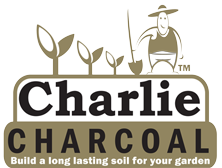


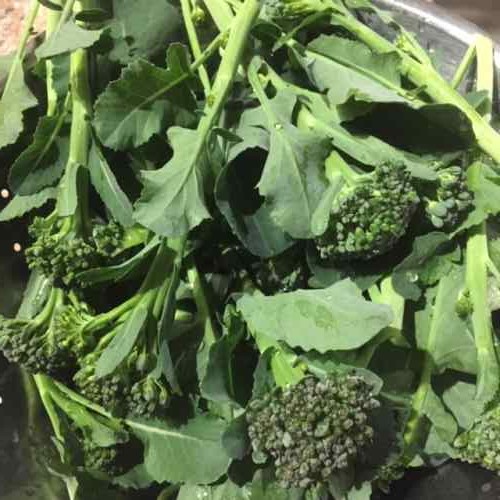 Feed. Keep feeding your winter vegies that are still producing. A light feed with
Feed. Keep feeding your winter vegies that are still producing. A light feed with  Get ready to feed up your fruit trees. It is possibly a little early at the start of the month, but heading to the end of August/early September (and depending on the weather) it's time to feed up your Citrus trees, and your deciduous trees that will be emerging from Winter dormancy. We recommend a good
Get ready to feed up your fruit trees. It is possibly a little early at the start of the month, but heading to the end of August/early September (and depending on the weather) it's time to feed up your Citrus trees, and your deciduous trees that will be emerging from Winter dormancy. We recommend a good 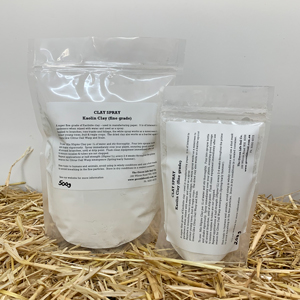 Another option for Citrus Gall Wasp - try our super fine kaolin clay product
Another option for Citrus Gall Wasp - try our super fine kaolin clay product.JPG) Plant trees & shrubs. Bare rooted trees are now available & it's the best time to plant before they emerge from dormancy. Consider planting some flowering native plants to bring in birds and pollinators. Visit a good nursery on a lovely, sunny day and get some advice about what variety/ies will suit your garden, situation & site, and soil type. Remember many fruit trees need a pollinator - so make sure you get the right advice.
Plant trees & shrubs. Bare rooted trees are now available & it's the best time to plant before they emerge from dormancy. Consider planting some flowering native plants to bring in birds and pollinators. Visit a good nursery on a lovely, sunny day and get some advice about what variety/ies will suit your garden, situation & site, and soil type. Remember many fruit trees need a pollinator - so make sure you get the right advice.


 We know you're keen to get stuck back into the garden as soon as some fine weather comes along. In order to help you get a good start on your Spring garden, this month our special offer is reduced delivery pricing on bulk deliveries (we offered it last month - but really; who was working in their garden in all that rain??). So for the month of August, any bulk delivery over 1m3 we will reduce the delivery price by $25. Depending where you live, that's a saving of between 50% - 25% off the cost of delivery.
We know you're keen to get stuck back into the garden as soon as some fine weather comes along. In order to help you get a good start on your Spring garden, this month our special offer is reduced delivery pricing on bulk deliveries (we offered it last month - but really; who was working in their garden in all that rain??). So for the month of August, any bulk delivery over 1m3 we will reduce the delivery price by $25. Depending where you live, that's a saving of between 50% - 25% off the cost of delivery.






